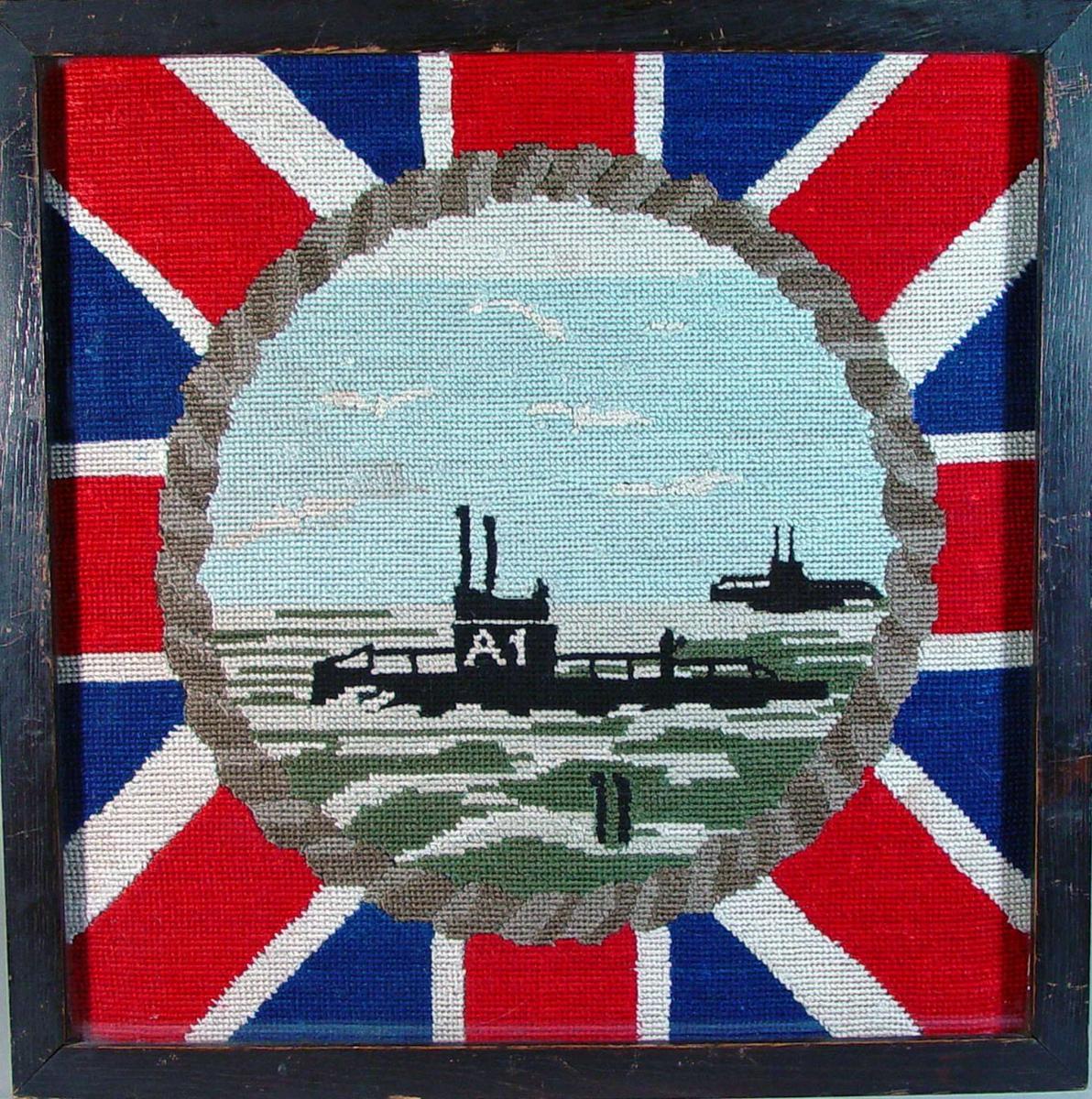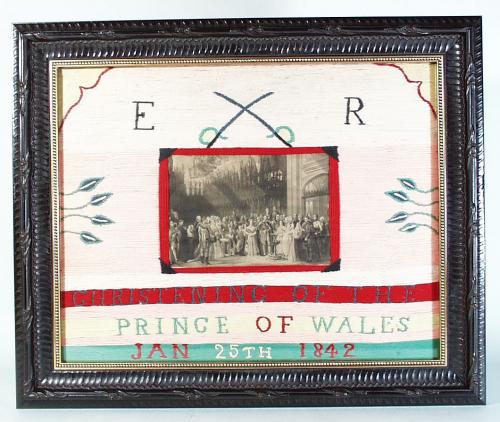

Price on application
This object is eligible for a Certificate of BADA Provenance
The BADA Standard
- Since 1918, BADA has been the leading association for the antiques and fine art trade
- Members are elected for their knowledge, integrity and quality of stock
- Our clients are protected by BADA’s code of conduct
- Our dealers’ membership is reviewed and renewed annually
- Bada.org is a non-profit site: clients deal directly with members and they pay no hidden fees
Sailor's Embroidered Woolwork Picture of Submarines- H.M.S. A1.
Early 20th century.
Textile.
The square form embroidered wool picture depicts a sea scene with three submarines, one almost submerged, one in the centre named AI, and another in the background.
Reference: HMS A1 From Wikipedia.
HMS A1 was the Royal Navy's first British-designed submarine, and their first to suffer fatal casualties. She was the lead ship of the first British A-class submarines (a second, much different A-Class appeared towards the end of the Second World War), and the only one to have a single bow torpedo tube.
She was actually sunk twice: first in 1904 when she became the first submarine casualty, with the loss of all hands; however she was recovered, but sank again in 1911, this time when she was unmanned. The wreck was discovered in 1989 and is now a protected wreck.[3]
She was an enlarged and improved Holland class submarine - 40 ft (12 m) longer than the Royal Navy's five "Holland"-type boats. The most notable improvement was the addition of a conning tower. (1) Subsequent A Class boats were even larger and differed from her in several respects.
Like all members of her class, she was built at Vickers, Barrow-in-Furness. She was launched on July 1902.
Before she left the yard she suffered from a hydrogen explosion. [4] Later while under tow to Portsmouth to join with the rest of the navy's submarines seawater managed to reach her batteries which gave off Chlorine Gas forcing the evacuation of the vessel.[4]
Casualty, recovery, loss and rediscovery
She was accidentally sunk in the Solent on 18 March 1904 whilst carrying out a practice attack on Juno by being struck on the starboard side of the conning tower by a mail steamer, SS Berwick Castle which was en route from Southampton to Hamburg.
She sank in only 39 ft (12 m) of water, but the boat flooded and the entire crew was drowned.[5] One consequence was that all subsequent Royal Navy submarines were equipped with a watertight hatch at the bottom of the conning tower.[6]
She was raised on 18 April 1904 and repaired and re-entered service. Following a petrol explosino on August 1910 she was converted to a testbed for the Admiralty's Anti-Submarine Committee.
She was lost a year later when running submerged but unmanned under automatic pilot.
References
1 a b Submarine Heritage Centre
2 Fitzsimons, Bernard, ed. Illustrated Encyclopedia of 20th Century Weapons and Warfare (London, Phoebus, 1978) Volume 1, p.1, "A-1".
3 The Advisory Committee for Historic Wreck Sites Annual Report for 2005
4 a b Gray, Edwyn (2003). Disasters of the Deep A Comprehensive Survey of Submarine Accidents & Disasters. Leo Cooper. p. 49. ISBN 0-85052-987-5.
5 Submarine losses 1904 to present day RN submarine museum website
6 *Innes McCartney (2002). Lost Patrols: Submarine Wrecks of the English Channel
Dimensions
18 inches x 18 inchesStock number
NY05209AThe BADA Standard
- Since 1918, BADA has been the leading association for the antiques and fine art trade
- Members are elected for their knowledge, integrity and quality of stock
- Our clients are protected by BADA’s code of conduct
- Our dealers’ membership is reviewed and renewed annually
- Bada.org is a non-profit site: clients deal directly with members and they pay no hidden fees




